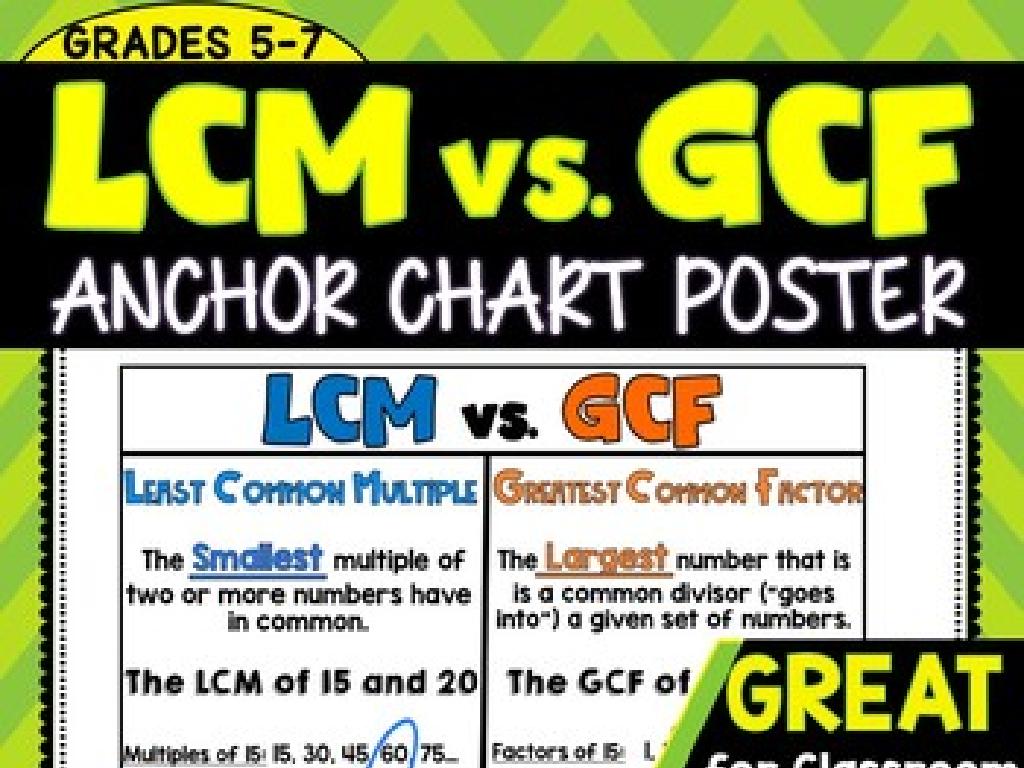Is The Sentence Declarative, Interrogative, Imperative, Or Exclamatory?
Subject: Language arts
Grade: Sixth grade
Topic: Sentences, Fragments, And Run-Ons
Please LOG IN to download the presentation. Access is available to registered users only.
View More Content
Types of Sentences
– What are sentences and fragments?
– Sentences express complete thoughts, while fragments don’t.
– What is a run-on sentence?
– Run-ons are sentences incorrectly joined without punctuation.
– Types of sentences
– Declarative states facts, interrogative asks questions, imperative gives commands, exclamatory shows strong emotion.
– Identifying sentence types
|
Begin the class by explaining the difference between complete sentences and fragments, emphasizing the importance of expressing a complete thought. Then, discuss run-on sentences and how they can confuse the reader by not having proper punctuation. Introduce the four types of sentences: declarative, interrogative, imperative, and exclamatory, providing definitions and examples for each. The learning objective is for students to be able to identify these types in various texts. Use interactive activities where students can practice distinguishing between the types, and encourage them to create their own examples.
Exploring Sentence Types
– Definition of a sentence
– A sentence is a complete idea expressed with words.
– Sentence structure essentials
– Every sentence needs a subject (who/what) and a predicate (action).
– Punctuation marks and purpose
– Periods end statements; question marks end questions; exclamation points show strong feelings.
– Types of sentences
– Sentences can be declarative, interrogative, imperative, or exclamatory.
|
This slide introduces students to the basic concept of what constitutes a sentence. It’s important to emphasize that a sentence is not just a random collection of words, but a complete thought that provides clear information. The subject and predicate are the backbone of sentence structure, and understanding this helps students identify and correct fragments and run-ons. Punctuation marks are the signals that help readers understand the purpose of a sentence, whether it’s stating a fact, asking a question, giving a command, or expressing emotion. Encourage students to come up with their own examples of each type of sentence to reinforce their understanding.
Sentence Fragments and Run-ons
– What is a sentence fragment?
– A fragment lacks a subject, predicate, or both and doesn’t express a complete thought.
– Identifying run-on sentences
– Run-ons are sentences joined without proper punctuation or conjunctions, often causing confusion.
– Correcting fragments and run-ons
– Use punctuation, conjunctions, or rewrite to make complete sentences.
– Practice with examples
– We’ll work on examples together to understand and correct fragments and run-ons.
|
This slide introduces students to the concepts of sentence fragments and run-on sentences. A sentence fragment is an incomplete sentence that cannot stand alone because it lacks a subject, a predicate, or both. Run-on sentences occur when two or more sentences are improperly joined without the necessary punctuation or connecting words. During the lesson, emphasize the importance of expressing complete thoughts in writing for clarity. Provide students with strategies to identify and correct these common mistakes, such as looking for missing components or checking for proper punctuation. Use examples to practice these skills, and encourage students to bring examples from their reading or writing to discuss.
Understanding Declarative Sentences
– Declarative sentences state facts
– They express information, like ‘Cats are pets.’
– They end with a period
– A period signifies a statement, not a question or exclamation
– Example: ‘The sky is blue.’
– This sentence states a fact about the color of the sky
|
This slide introduces declarative sentences, which are the most common type of sentence used to convey facts or opinions. Emphasize that these sentences always end with a period. Use the example ‘The sky is blue.’ to show a simple declarative sentence. Encourage students to think of their own examples of facts or opinions and how they would phrase them as declarative sentences. Discuss how the punctuation helps to understand the purpose of the sentence. This will help students to distinguish declarative sentences from other types in subsequent lessons.
Exploring Interrogative Sentences
– Interrogative sentences ask questions
– Begins with words like ‘what’, ‘why’, ‘how’, or ‘where’
– They conclude with a question mark
– The punctuation is crucial for understanding the sentence type
– Example: ‘What is your favorite book?’
– This question asks for information about preferences in literature
|
This slide introduces students to interrogative sentences, which are used to ask questions and always end with a question mark. Emphasize the importance of the question mark as it changes the tone and purpose of a sentence. Use the example provided to show how interrogative sentences often start with question words and seek information. Encourage students to come up with their own examples of interrogative sentences and to identify the question words and the expected answers. This will help them understand how to use and recognize interrogative sentences in their writing and reading.
Exploring Imperative Sentences
– Imperative sentences give commands
– It’s like giving instructions or making requests.
– They can end with a period or exclamation
– Use a period for a calm request or an exclamation point to show strong emotion or urgency.
– Example: ‘Please take out your notebooks.’
– This is a polite request to the class to prepare for the lesson.
|
This slide introduces imperative sentences, which are used to issue commands or requests. Emphasize that while they often end with a period, an exclamation point can be used for added emphasis or to express urgency. Provide the example ‘Please take out your notebooks.’ to illustrate a polite request. Encourage students to think of other examples of commands or requests they hear daily. Discuss how the tone of the sentence can change with punctuation. Instruct students to create their own imperative sentences, considering the impact of their chosen punctuation.
Exclamatory Sentences
– Expresses strong emotion
– Shows excitement, surprise, or strong feeling
– Ends with an exclamation point
– Look for ‘!’ at the end of the sentence
– Example: ‘What a beautiful painting!’
– Use it to express admiration or amazement
|
Exclamatory sentences are used to convey a strong emotion or reaction. They are easily identified by their ending punctuation, an exclamation point. When teaching this concept, emphasize the difference in tone compared to other sentence types. Provide various examples of exclamatory sentences to help students recognize the pattern and encourage them to create their own examples. Discuss how the use of an exclamation point affects the reader’s understanding of the writer’s emotional intent.
Let’s Practice: Sentence Types
– Identify sentence types in reading
– Discuss reasons for sentence classifications
– Examples: declarative, interrogative, imperative, exclamatory
– ‘The sky is blue.’ (declarative) ‘Are you okay?’ (interrogative) ‘Please sit down.’ (imperative) ‘Wow, that’s amazing!’ (exclamatory)
– Share your findings with the class
|
This slide is for a class activity where students will practice identifying different types of sentences. After reading a passage together, each student will pick out sentences and determine whether they are declarative, interrogative, imperative, or exclamatory. They will then discuss their reasoning, focusing on the structure and punctuation of the sentences. For example, declarative sentences make a statement and end with a period, interrogative sentences ask a question and end with a question mark, imperative sentences give a command or request and can end with a period or an exclamation mark, and exclamatory sentences express strong emotion and end with an exclamation mark. Encourage students to explain their thought process and provide evidence from the text to support their decisions. This will help them understand the purpose and characteristics of each sentence type.
Class Activity: Sentence Scavenger Hunt
– Find sentences in a book/article
– Write down each sentence
– Label each sentence type
– Declarative (statement), Interrogative (question), Imperative (command), Exclamatory (strong emotion)
– Share with the class
|
This activity is designed to help students identify different types of sentences in a practical and engaging way. By using their favorite books or articles, students will search for examples of declarative, interrogative, imperative, and exclamatory sentences. They should write down the sentences along with their type, which will reinforce their understanding of the material. During the next class, students will share their findings, allowing them to learn from each other’s examples. For the teacher: Prepare to guide students who may struggle to differentiate between types, and have additional examples ready for each sentence type to ensure clarity and understanding.
Sentence Types: Review & Homework
– Review four sentence types
– Write two declarative sentences
– Statements that provide information.
– Craft two interrogative sentences
– Questions that ask for information.
– Create two imperative sentences
– Commands or requests.
– Formulate two exclamatory sentences
– Express strong emotion or surprise.
|
As we conclude, let’s recap the four types of sentences we’ve learned: declarative, interrogative, imperative, and exclamatory. For homework, students are to write two original examples of each sentence type to reinforce their understanding. Declarative sentences make a statement, interrogative sentences ask a question, imperative sentences give a command or make a request, and exclamatory sentences express strong emotion. Encourage creativity and remind students to use proper punctuation for each sentence type. This exercise will help solidify their grasp of sentence structures and their functions in communication.






